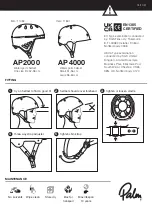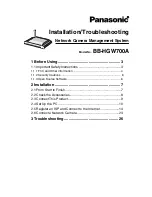
6RL SERIES OPERATION MANUAL
SECTION 6: FRONT PANEL OPERATION
Entire Contents Copyright
2018 by Adaptive Power Systems, Inc. (APS) • All Rights Reserved • No reproduction without written authorization from APS.
6RL Series Regenerative DC Load Operation Manual
Page 95 of 204
6.9.6
Triangular Function
The following parameters can be configured for a triangular wave function:
Value
Range
Description
I(A), U(A)
0...(Nominal value - (Offs)) of U, I
A = Amplitude of the signal to be generated
I(Offs), U(Offs)
0...(Nominal value - (A)) of U, I
Offs = Offset, based on the foot of the triangular wave
t1
0.1 ms...36000 s
Rising edge time Δt of the triangular wave signal
t2
0.1 ms...36000 s
Falling edge time Δt of the triangular wave signal
Schematic Diagram:
Application and Result:
A triangular wave signal for output current (only
effective in current limiting) or output voltage is
generated. The positive and negative slope times
can be set independently. The offset shifts the
signal on the Y-axis. The sum of the intervals t1
and t2 gives the cycle time and its reciprocal is
the frequency.
Example: A frequency of 10 Hz is required and
would lead to periodic duration of 100 ms. This
100 ms can be freely allocated to t1 and t2, e.g.
50 ms:50 ms (isosceles triangle) or 99.9 ms:0.1
ms (right-angled triangle or saw tooth).
6.9.7
Rectangular Function
The following parameters can be configured for a rectangular wave function:
Value
Range
Description
I(A), U(A)
0...(Nominal value - (Offs)) of U, I
A = Amplitude of the signal to be generated
I(Offs), U(Offs)
0...(Nominal value - (A)) of U, I
Offs = Offset, based on the foot of the rectangular wave
t1
0.1 ms...36000 s
Time (pulse width) of the upper level (amplitude)
t2
0.1 ms...36000 s
Time (pause width) of the lower level (offset)
Schematic Diagram:
Application and Result:
A rectangular or square wave signal for input current
(direct) or input voltage (indirect) is generated. The
intervals t1 and t2 define how long the value of the
amplitude (pulse) and how long the value of the
offset (pause) are effective. The offset shifts the
signal on the Y axis. Intervals t1 and t2 can be used to
define a duty cycle. The sum of t1 and t2 gives the
period and its reciprocal is the frequency.
Example: a rectangular wave signal of 25 Hz and a
duty cycle of 80% are required. The sum of t1 and t2,
the period, is 1/25 Hz = 40 ms. For a duty cycle of
80% the pulse time (t1) is 40 ms*0.8 = 32 ms and the
pause time (t2) is 8 ms.
Summary of Contents for 6RL Series
Page 203: ......
















































